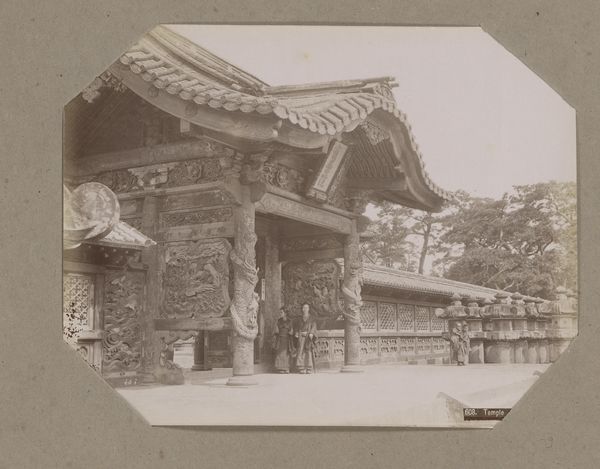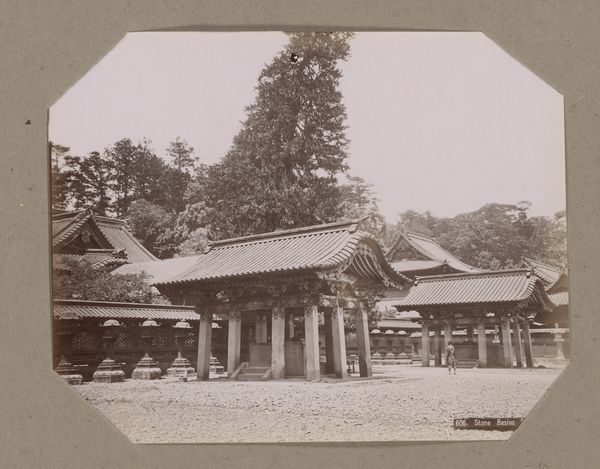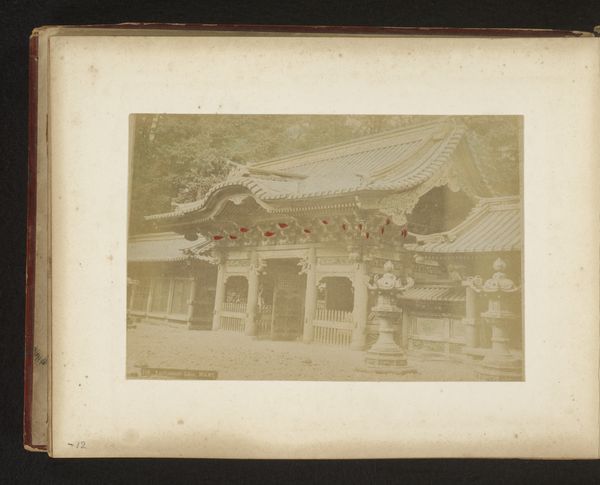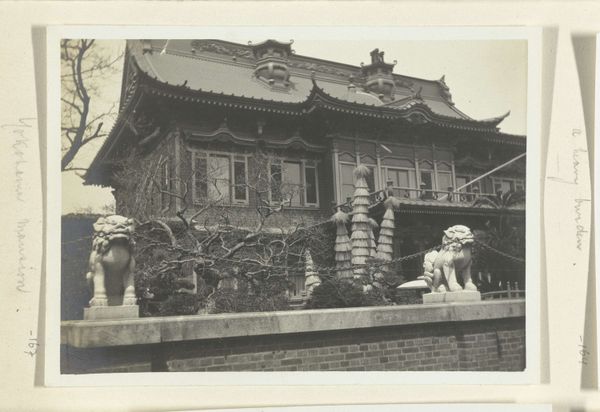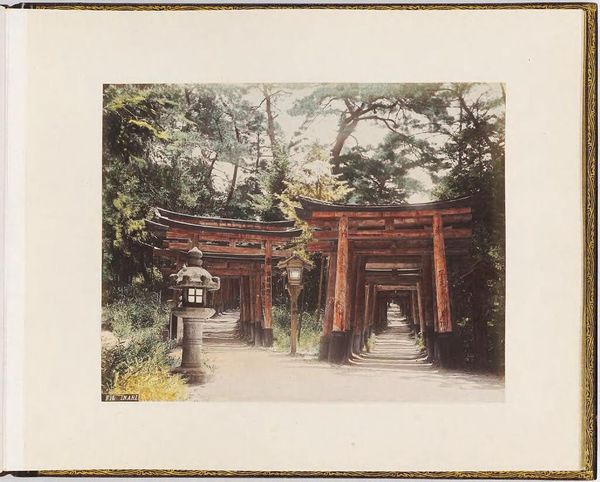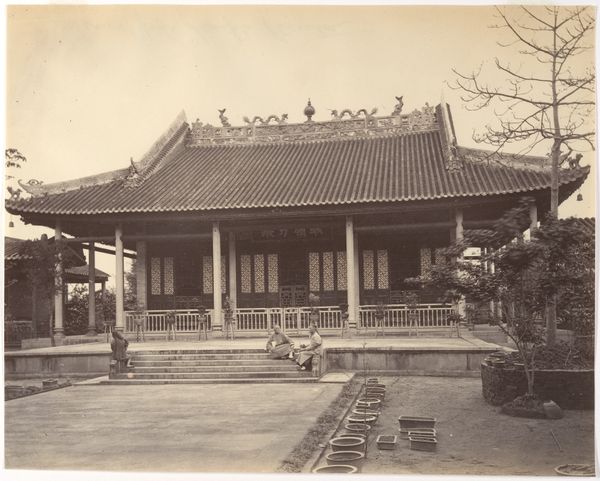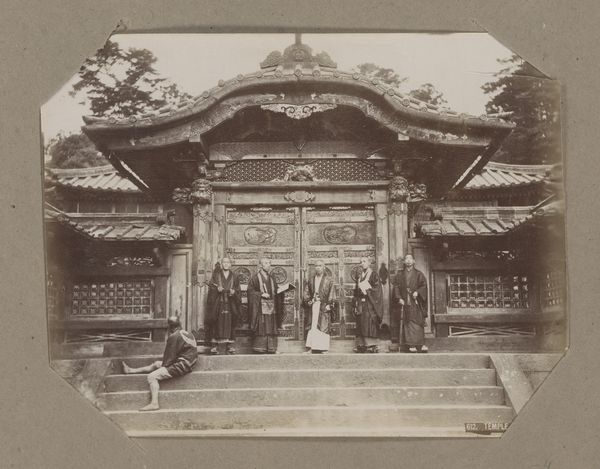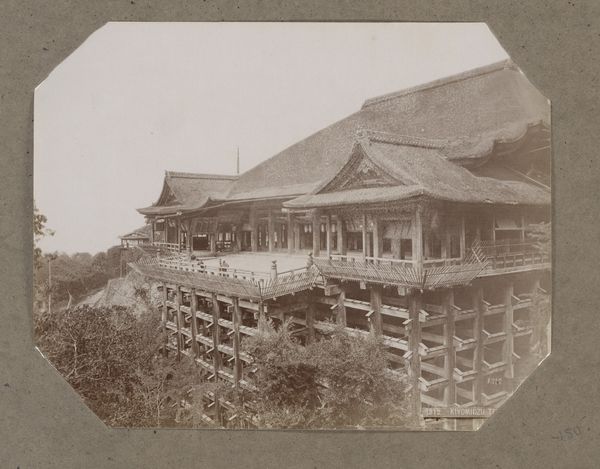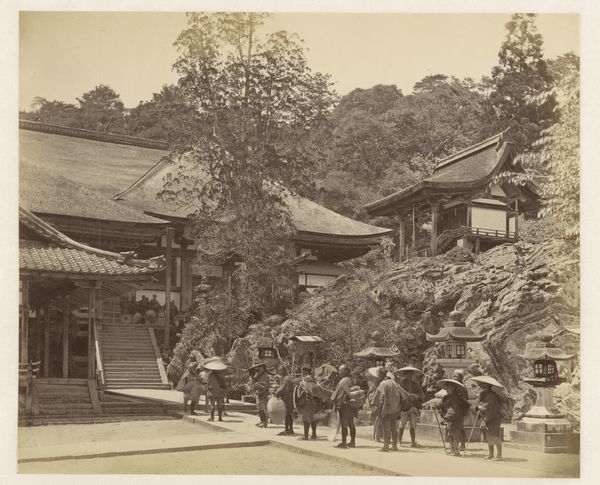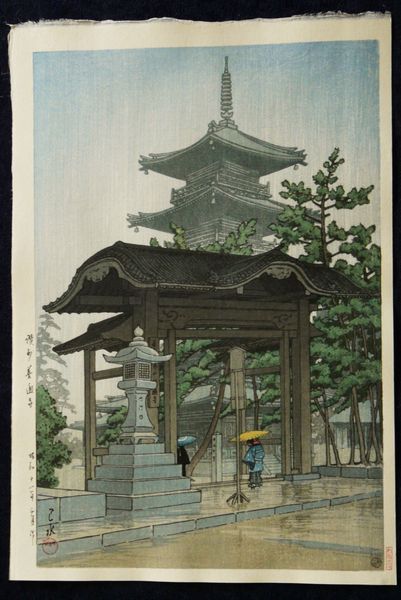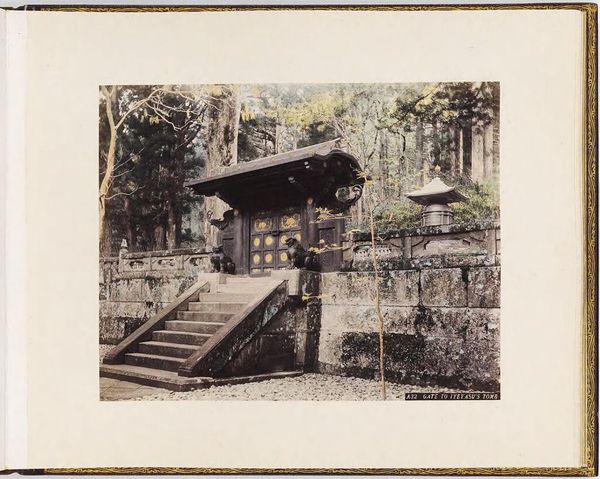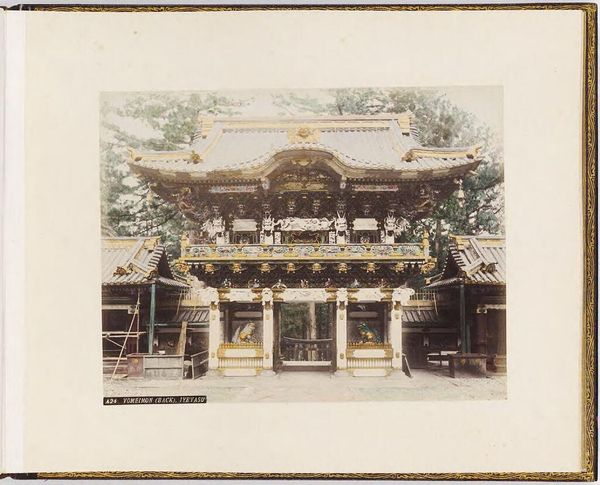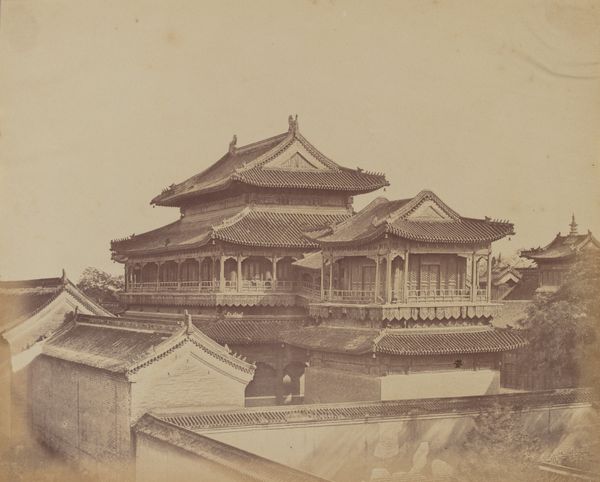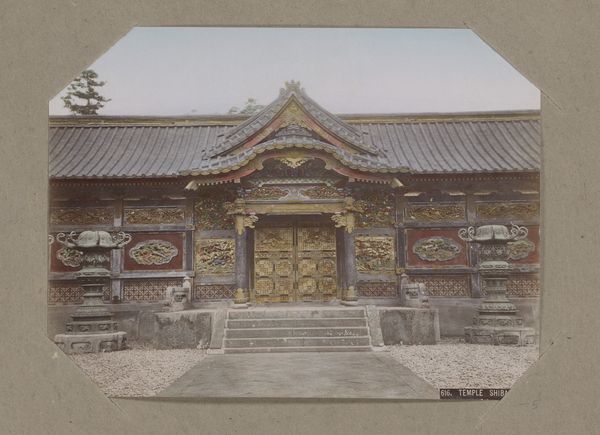
albumen-print, photography, albumen-print, architecture
#
albumen-print
#
asian-art
#
photography
#
albumen-print
#
architecture
Dimensions: height 229 mm, width 308 mm, height 309 mm, width 491 mm
Copyright: Rijks Museum: Open Domain
Editor: Here we have "Mausoleum van Oeyo bij het Zōjō-ji in Tokyo, Japan", taken by Felice Beato between 1867 and 1868, using the albumen print technique. It’s striking how the light plays on the tiled roof. What can you tell me about it? Curator: The albumen print, itself, is key. Think of the labor: coating the paper with egg whites to bind the photographic chemicals. And look how it renders the textures of the architecture. Notice how the photograph, disseminated widely, fuelled Japonisme in the West. This wasn't just a landscape; it was a commodity shaped by burgeoning global trade. Editor: A commodity? I hadn’t thought of it that way. Is the choice of subject – a mausoleum – relevant to that? Curator: Absolutely. Consider the consumption of the exotic "Orient" by the West. The image of a mausoleum caters to a market hungry for romantic, distant lands. The photograph becomes a token of cultural appropriation, consumed and digested back in Europe. Note too, the clear influence from local, traditional woodworking and stone masonry methods apparent in the architectural structure and materiality. Editor: So you’re saying the print is less about artistic expression and more about the mechanisms of cultural exchange and consumption? Curator: Not necessarily 'less about,' but certainly 'also about'. It forces us to confront the materiality of the image and its role in shaping perceptions of Japan. Who profits? What stories get told? Editor: That’s given me a totally new perspective on understanding this work. Curator: Indeed. By examining the production and consumption of art, we can uncover the power dynamics at play in cultural exchange.
Comments
No comments
Be the first to comment and join the conversation on the ultimate creative platform.
